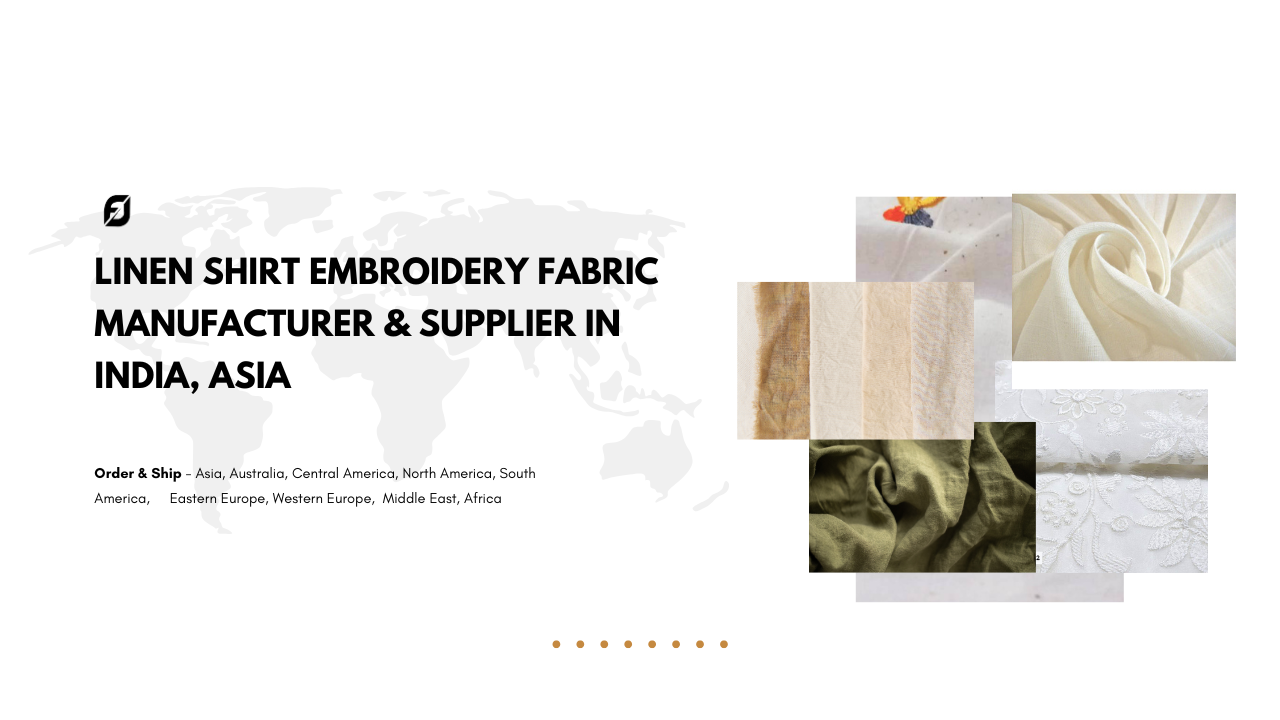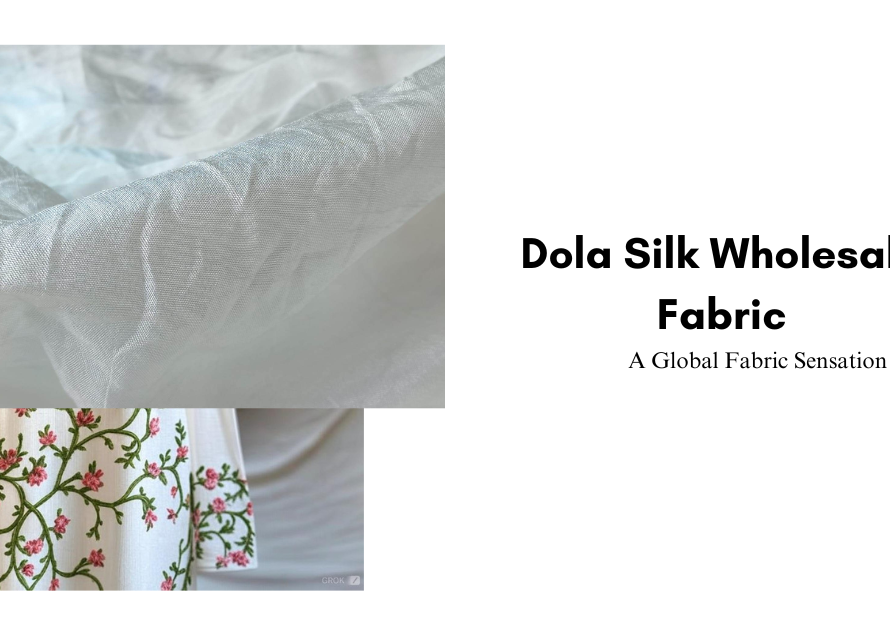Organic cotton has become a cornerstone of sustainable fashion, offering a fabric that is not only gentle on the skin but also on the environment.
The process of transforming raw cotton from the fields into a finished garment is a meticulous one, ensuring that the purity and organic nature of the cotton are preserved throughout. Here’s a detailed look at the journey of pure organic cotton, from farming to the final product.
The Journey of Pure Organic Cotton: From Farming to Finished Fabric
1. Sustainable Farming Practices
The journey begins with the cultivation of organic cotton, which is grown without synthetic pesticides, herbicides, or genetically modified organisms (GMOs). Organic farmers use natural fertilizers like compost and animal manure to enrich the soil, promoting healthy crop growth. Crop rotation and intercropping are also practiced to maintain soil fertility and reduce pests naturally.
Water management is a critical aspect of organic cotton farming. Farmers rely on rainwater harvesting and efficient irrigation techniques to conserve water. By avoiding harmful chemicals, organic cotton farming ensures that the surrounding ecosystems remain healthy, supporting biodiversity.
2. Harvesting the Cotton
Once the cotton plants have matured, the bolls (cotton fibers) are harvested. In organic cotton farming, this process is often done by hand, which helps maintain the integrity of the cotton fibers. Handpicking reduces the likelihood of contamination by leaves, stems, or synthetic chemicals, ensuring that the cotton remains pure.
3. Ginning: Separating the Cotton Fibers
After harvesting, the cotton undergoes ginning, a process where the cotton fibers are separated from the seeds. Ginning in organic cotton production is carried out with great care to prevent contamination. The cotton is cleaned, and the seeds are removed, leaving behind the fluffy cotton fibers ready for further processing.
4. Spinning: Transforming Fiber into Yarn
The clean cotton fibers are then spun into yarn. This process involves carding, where the fibers are aligned and cleaned further, followed by spinning to twist the fibers into a continuous thread. The resulting yarn is smooth and strong, ready to be woven or knitted into fabric. For organic cotton, it’s crucial that no synthetic dyes or chemicals are added during this stage, preserving the fabric’s organic integrity.
5. Weaving or Knitting: Creating the Fabric
The spun yarn is then woven or knitted into fabric. Weaving involves interlacing two sets of yarns at right angles, while knitting involves interlooping yarns. The choice of technique depends on the desired texture and quality of the final fabric. Throughout this process, organic standards are strictly followed to avoid any chemical treatments or synthetic finishes.
6. Finishing: The Final Touch
The finishing stage is where the raw fabric is treated to enhance its appearance and texture. For organic cotton, this step is carefully managed to ensure no harmful chemicals are used. Instead, natural enzymes and water-based processes are employed to soften the fabric, making it comfortable and skin-friendly. Dyeing, if needed, is done using natural or low-impact dyes that comply with organic certification standards.
7. Quality Control and Certification
Before the organic cotton fabric is ready for market, it undergoes rigorous quality control checks. The fabric is tested for purity, ensuring it meets the organic standards set by certification bodies like the Global Organic Textile Standard (GOTS). Once certified, the fabric is ready to be crafted into garments or other products, bearing the mark of authenticity that consumers trust.
8. From Fabric to Fashion: The Final Product
Finally, the organic cotton fabric is transformed into finished products, such as clothing, bed linens, or accessories. Designers and manufacturers who prioritize sustainability select organic cotton for its softness, durability, and eco-friendly nature. The end products are not only stylish but also ethically made, offering consumers a choice that supports environmental and social responsibility.
The process of converting pure organic cotton from the farm to the finished product is a comprehensive and mindful journey. It emphasizes the importance of sustainability at every stage, ensuring that the final fabric is free from harmful chemicals and produced in harmony with nature. By choosing organic cotton, consumers are supporting a more sustainable fashion industry, one that respects both people and the planet.
_________________________________________________
What are the key differences between organic cotton farming and conventional cotton farming?
Organic cotton farming differs significantly from conventional cotton farming in terms of environmental impact, farming practices, and product quality. Organic cotton is grown without synthetic pesticides, herbicides, or genetically modified organisms (GMOs). Instead, organic farmers use natural fertilizers, such as compost and animal manure, to nourish the soil. Crop rotation and intercropping are practiced to maintain soil health and reduce pest infestations naturally, whereas conventional farming often relies heavily on chemical inputs that can harm the environment and biodiversity.
Water management is also more sustainable in organic cotton farming. Farmers typically use rainwater harvesting and efficient irrigation techniques to minimize water use, while conventional cotton farming can lead to excessive water consumption and depletion of local water resources.
Moreover, organic cotton is handpicked, which preserves the quality and purity of the fibers, avoiding contamination by chemicals or machine residues. In contrast, conventional cotton may be harvested using machinery that can damage the fibers and introduce contaminants. The absence of synthetic chemicals in organic cotton farming results in a fabric that is softer, safer for sensitive skin, and more environmentally friendly than conventional cotton.
How is organic cotton harvested, and why is it usually done by hand?
Organic cotton is typically harvested by hand to maintain the purity and quality of the cotton fibers. Handpicking is a crucial step in organic cotton farming, as it allows for the careful selection of fully matured cotton bolls, reducing the risk of damage to the fibers. This method also minimizes contamination from leaves, stems, or any synthetic chemicals, which can occur in machine harvesting.
The process begins when the cotton plants reach maturity, and the bolls, which are the protective capsules that hold the cotton fibers, naturally open. Farmers then handpick the cotton, ensuring that only the highest quality bolls are selected. This attention to detail helps in preserving the softness and strength of the fibers, which are essential characteristics of organic cotton fabric.
In contrast, conventional cotton harvesting often involves machinery, which can lead to the inclusion of impurities and damage to the cotton fibers. These machines are not selective, and they can inadvertently collect immature bolls or plant debris, which lowers the quality of the final product. Handpicking, therefore, ensures that organic cotton remains free from such contaminants, making it a superior choice for those seeking pure, high-quality cotton.
What is the ginning process in organic cotton production, and why is it important?
Ginning is a critical process in organic cotton production that involves separating the cotton fibers from the seeds. This step is essential to prepare the cotton for further processing into yarn and fabric. In organic cotton production, ginning is carried out with great care to maintain the purity and integrity of the cotton fibers.
After harvesting, the cotton bolls contain both seeds and fibers. The ginning process begins by feeding the harvested cotton into a machine that gently separates the fibers (known as lint) from the seeds. The seeds are then collected for replanting or other uses, while the lint is cleaned and prepared for spinning.
The importance of ginning in organic cotton production lies in its role in ensuring the quality of the final product. Organic cotton ginning is designed to minimize the risk of contamination with non-organic materials or chemicals. By maintaining a clean and controlled environment, the ginning process preserves the organic status of the cotton, ensuring that it remains free from synthetic additives or impurities.
This careful handling during ginning results in high-quality cotton fibers that are ready to be spun into yarn, woven into fabric, and ultimately crafted into pure organic cotton products.
How does spinning transform organic cotton fibers into yarn, and what makes it different from conventional methods?
Spinning is the process that transforms organic cotton fibers into yarn, a crucial step in creating fabric. In organic cotton production, spinning is carried out with particular attention to preserving the natural qualities of the fibers and avoiding any synthetic additives that could compromise the cotton’s organic integrity.
The process begins with carding, where the cotton fibers are aligned and cleaned to remove any remaining impurities. This step ensures that the fibers are smooth and ready for spinning. During spinning, the aligned fibers are twisted together to form a continuous thread or yarn. The level of twist and the thickness of the yarn can be adjusted based on the desired texture and strength of the final fabric.
What sets organic cotton spinning apart from conventional methods is the strict adherence to organic standards. No synthetic chemicals, such as bleaches, are used, and the process is designed to be as natural as possible. This careful handling preserves the softness, strength, and purity of the organic cotton, making it ideal for producing high-quality, skin-friendly fabrics.
The result is a yarn that retains the natural benefits of organic cotton, including its breathability, durability, and gentleness on the skin, ready to be woven or knitted into premium organic fabric.
What are the benefits of weaving or knitting organic cotton yarn into fabric?
Weaving or knitting organic cotton yarn into fabric offers numerous benefits, both in terms of product quality and environmental impact. The choice between weaving and knitting depends on the desired texture and characteristics of the final fabric, but both processes result in a textile that is soft, durable, and eco-friendly.
Weaving involves interlacing two sets of yarns at right angles, creating a strong and stable fabric. This method is ideal for producing fabrics with a smooth surface, such as sheets, shirts, and dresses. Knitting, on the other hand, involves interlooping yarns to create a fabric that is stretchier and more flexible, making it suitable for items like t-shirts, sweaters, and other garments requiring elasticity.
One of the primary benefits of using organic cotton yarn is its natural softness and breathability, making the fabric comfortable to wear. Organic cotton fabrics are also hypoallergenic, meaning they are less likely to cause skin irritations, which is especially important for individuals with sensitive skin.
Additionally, the environmental benefits of organic cotton extend to the weaving and knitting processes, as no harmful chemicals or synthetic finishes are used. This results in a fabric that is not only better for the wearer but also for the planet, promoting sustainable fashion choices.
How is organic cotton fabric finished, and what ensures it remains organic during this process?
The finishing process of organic cotton fabric is carefully managed to preserve its organic integrity while enhancing the fabric’s appearance, texture, and durability. This stage involves several treatments that prepare the fabric for its final use, such as softening, dyeing, and pre-shrinking. The key to maintaining the fabric’s organic status during finishing is the strict avoidance of synthetic chemicals and the use of natural or low-impact alternatives.
One of the most common finishing treatments for organic cotton fabric is softening. Instead of using chemical softeners, organic cotton is treated with natural enzymes that break down the rougher parts of the fabric, resulting in a softer and more comfortable textile.
If the fabric is to be dyed, organic cotton is colored using natural dyes or low-impact, non-toxic dyes that meet organic certification standards. These dyes are free from heavy metals, formaldehyde, and other harmful substances that are commonly found in conventional dyes.
Finally, pre-shrinking may be done using mechanical processes or steam, rather than chemical treatments, to ensure the fabric maintains its size and shape during washing.
By adhering to these organic methods, the fabric remains free from harmful chemicals, making it safe for both the wearer and the environment while ensuring that the final product is truly organic.
What role does certification play in organic cotton production, and why is it important?
Certification plays a crucial role in organic cotton production, providing assurance that the cotton has been grown, processed, and manufactured according to strict organic standards. Certification is important for maintaining the integrity of organic cotton products, ensuring that they meet the expectations of consumers who are seeking environmentally friendly and ethically produced textiles.
The most widely recognized certification for organic cotton is the Global Organic Textile Standard (GOTS). This certification covers the entire supply chain, from the farming practices used to grow the cotton to the processing methods employed to create the final fabric. GOTS certification ensures that no harmful chemicals, such as synthetic pesticides, herbicides, or GMOs, are used in the cultivation of the cotton. It also guarantees that the fabric is processed without the use of toxic dyes, bleaches, or finishes.
Beyond environmental considerations, certification also addresses social criteria, ensuring that the workers involved in the production of organic cotton are treated fairly, with safe working conditions and fair wages.
For consumers, certification provides confidence that the organic cotton products they purchase are genuinely sustainable, ethically produced, and free from harmful substances, aligning with their values and supporting a more responsible fashion industry.
How does organic cotton fabric contribute to sustainable fashion?
Organic cotton fabric is a cornerstone of sustainable fashion, contributing to environmental preservation, ethical production practices, and healthier products for consumers. By choosing organic cotton, the fashion industry and consumers alike support a more sustainable and responsible approach to textile production.
One of the primary ways organic cotton fabric contributes to sustainability is through its environmentally friendly farming practices. Organic cotton is grown without synthetic pesticides, herbicides, or GMOs, which helps preserve soil health, reduce water pollution, and protect biodiversity. This method of farming also uses water more efficiently, often relying on rainwater, which helps conserve this precious resource.
In addition to its environmental benefits, organic cotton production promotes ethical labor practices. Certification standards like GOTS ensure that workers are treated fairly, with safe working conditions and reasonable wages. This commitment to social responsibility is a key aspect of sustainable fashion.
Furthermore, organic cotton fabric is free from harmful chemicals, making it safer for both the environment and the end consumer. The absence of toxic dyes and finishes means that organic cotton products are less likely to cause skin irritations or allergies, offering a healthier alternative
to conventional textiles.
By integrating organic cotton into their collections, fashion brands can reduce their ecological footprint and offer consumers products that align with their values of sustainability and ethical consumption.
What are the health benefits of wearing organic cotton clothing?
Wearing organic cotton clothing offers several health benefits, particularly for individuals with sensitive skin or allergies, and for those who are concerned about the potential impact of chemicals used in conventional textile production. Organic cotton is grown and processed without the use of synthetic pesticides, herbicides, or toxic dyes, making it a safer and healthier choice for everyday wear.
One of the main health benefits of organic cotton is its hypoallergenic nature. The absence of chemical residues in organic cotton reduces the risk of skin irritations, rashes, and allergies, making it an ideal fabric for individuals with sensitive skin, including babies and those with skin conditions like eczema.
Moreover, organic cotton is breathable and highly absorbent, which helps regulate body temperature and keeps the skin dry and comfortable. This makes organic cotton clothing particularly beneficial in warm climates or for active wear.
The lack of harmful chemicals in organic cotton also means that there is no risk of exposure to substances like formaldehyde or heavy metals, which are often present in conventionally processed textiles. These chemicals can have long-term health effects, including respiratory issues and skin sensitization.
By choosing organic cotton clothing, consumers can enjoy the comfort and safety of a natural, chemical-free fabric that is gentle on the skin and better for overall health.
How does the environmental impact of organic cotton compare to that of conventional cotton?
The environmental impact of organic cotton is significantly lower than that of conventional cotton, making it a more sustainable choice for textile production. Organic cotton farming practices prioritize environmental stewardship, focusing on soil health, water conservation, and biodiversity, while conventional cotton farming often relies heavily on synthetic chemicals and unsustainable water usage.
One of the most significant environmental benefits of organic cotton is the absence of synthetic pesticides and herbicides. These chemicals, commonly used in conventional cotton farming, can contaminate soil and water sources, harm wildlife, and contribute to the loss of biodiversity. Organic cotton farming, on the other hand, uses natural methods to control pests and enrich the soil, such as crop rotation, intercropping, and the use of organic fertilizers like compost.
Water usage is another area where organic cotton has a lower environmental impact. Organic cotton farming often relies on rainwater or efficient irrigation systems, reducing the strain on local water resources. In contrast, conventional cotton farming is one of the most water-intensive agricultural practices, often leading to the depletion of water bodies and increased environmental stress.
Furthermore, organic cotton farming promotes healthier ecosystems by maintaining soil fertility and preventing erosion. The use of cover crops and reduced tillage practices helps retain soil moisture and organic matter, creating a more resilient agricultural system.
Overall, the environmental impact of organic cotton is far less detrimental than that of conventional cotton, making it a key component of sustainable fashion and responsible textile production.






